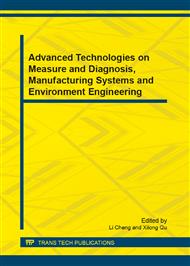p.45
p.51
p.56
p.61
p.66
p.71
p.75
p.79
p.87
Study on the Discharge Performance that the High Barium Ferrite as the Electrochemical Properties of Super-Iron Battery Cathode Active Material
Abstract:
The super-iron battery has a green, voltage stability and high-energy characteristics, but the stability is one of the key issues restricting its development. We select high barium ferrite as the active material of the cathode material, research on the stability of sodium silicate (Na 2 SiO 3 · 9H 2 O) and potassium permanganate (KMnO 4) as synthetic additives, the battery and its discharge properties. The study showed that the adding 0.2g sodium silicate barium salt of battery has a high discharge voltage and discharge energy, which is greater than the output current, made for 86.89% of the total power of the electric power made by the discharge voltage of 1.4 volts. While adding 0.4 g of sodium silicate barium salt of the battery having a relatively flat discharge platform and a high discharge capacity, which is larger than the discharge voltage of 1.2 volts, the output capacitor accounts for the total output capacity of 93.3%; adding potassium permanganate, barium salt battery compared with no additives barium salt battery discharge voltage of 1.4 volts, 91% of the total capacity of the discharge capacity, discharge energy to the total energy of 93.4%. The modified alkaline high barium ferrite batteries (Zn / BaFeO 4) suitable for high current discharge voltage and stable work occasions.
Info:
Periodical:
Pages:
66-70
Citation:
Online since:
June 2013
Authors:
Price:
Сopyright:
© 2013 Trans Tech Publications Ltd. All Rights Reserved
Share:
Citation:


